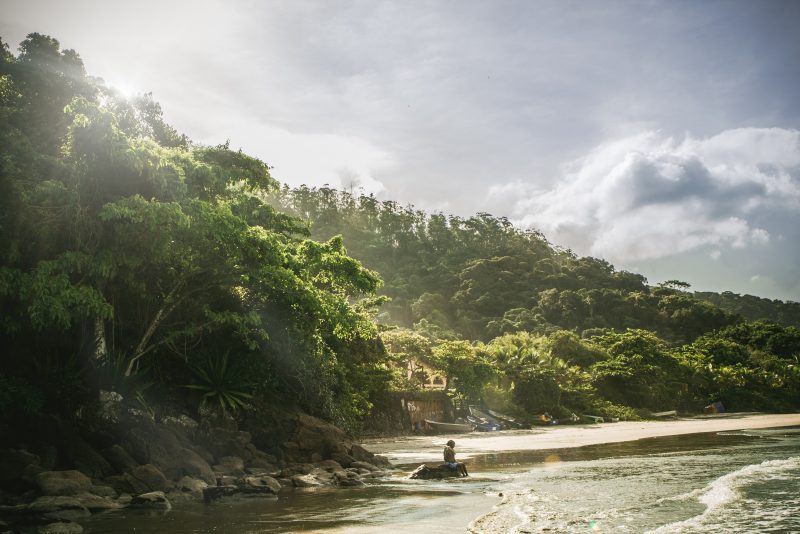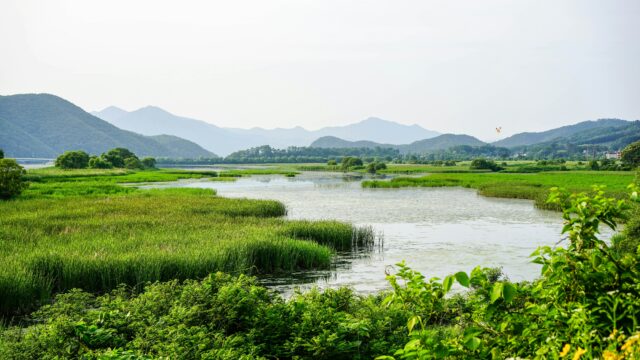Amazonian state leads the way to a green economy

The foundations have recently been established for a Green Economy program for Amapá state, in the Brazilian Amazon. On March 27th-28th a seminar was held in Macapá, the state capital, to discuss how to reorient some of Amapa’s existing sectors towards greener, more inclusive approaches, and to explore new ‘green business’ opportunities. A very significant range of opportunities and needs soon became apparent, and a draft plan was prepared for prioritizing and tackling them.
Amapá is relatively small compared to Brazil’s existing economy – it contributes just 0.2% of the national GDP, its main economies being driven by public spending. Yet, with over 70% of its territory in protected areas, and only 2% of its natural landscape deforested, there would also seem to be potential to create a new kind of economy if value can be captured and sustained from these extensive resources. Amapá now faces increasing pressures to deforestation from the advancing agricultural frontier, illegal logging, mining and infrastructure projects such as pavement of roads and hidroeletric dams.
That Amapá still retains this potential is surely connected to its 20-year history of sustainable development policy. In 1992, João Capiberibe, then governor of Amapá, was one of the first to implement a development program based on the pillars of sustainability in Brazil. In 2010, João’s son, Camilo Capiberibe, became the state’s governor, aiming to renew his father’s commitment to valuing natural resources, valuing local and traditional culture, and promoting conservation. Though sharing similar ethical ideas, he has seen that this has to work in today’s economic and business context – and so he has been promoting the concept of green economy.
The two-day seminar, organized by the state government and facilitated by Coalition member, IIED, brought together a small group of decision makers from various sectors, including business, government, researchers, and civil society. Held at the highest level, the governor himself participated for much of the intensive deliberations. The goal was to discuss what could be the main drivers, principles and criteria for Amapá’s Green Economy program, and to get a sense of the most bankable investment ideas that would also create jobs.
Amapá has many potential drivers for green economic development, with considerable mineral, hydroelectric, organic agriculture, açaí and other non-timber forest product, timber, fisheries, and logistical assets – all of which were explored during the seminar. The main challenge was felt to be two-fold: assuring that mainstream sectors with fairly secure financing follow social and environmental standards; and that the economic benefits are distributed among sectors of the economy with sustainable development potential, and especially among more vulnerable sectors of society.
Much of the discussion was therefore on the bottlenecks and opportunities for each sector, were it to follow principles of a green economy. The results informed a collectively constructed draft strategy document, which will serve as basis for formulating Amapá’s Green Economy program. The leader of each sector in the government (often the state secretary) has now been asked to reflect upon the document and prioritize actions for setting up the program. This prioritization will be based upon a ‘green economy test’ covering, e.g.: likely job creation potential; opportunity to include marginalized groups; availability of finance; likelihood of leveraging conservation effort; stakeholder motivation; and – importantly – market trends.
The working group will soon meet with the governor to present and discuss their ideas. It is expected that some of the potential activities in Amapá’s Green Economy program will be mutually supporting – essentially creating a state-level ‘branding’ that can attract quality investors interested in associating their business with the social and environmental values and benefits of the program.
A good example is açaí production. Açaí is a small berry from an indigenous palm tree which is very abundant in Amapá. It can be harvested in ways which also support a wide range of ecosystem services, supported by tried and tested agroforestry technologies developed by local research institutions. Its juice forms a highly nutritious part of daily meals for all social classes in Amapá. According to a recent study, the state’s açai economy is valued at nearly €208 million annually (in a €3.1 billion economy). The income is shared by extractivist communities, transport and sales in formal and informal markets. Recently, açaí berry has also become sought-after internationally for its great health benefits. One company alone – Sambazon – now buys açaí from over 10,000 extractivists and exports nearly 11,000 tons annually to the U.S. That has a significant impact on the economy of the entire production chain, yet there is still room for expansion, to meet both domestic and export markets.
Many other products can also be explored for their productive and sustainability potentials. Moreover, ways to ensure that existing industry meets best-in-world standards – notably in mining and logging – will be developed through a cross-sector program, involving government, business, and civil society.
Other events related to formulating Amapá’s Green Economy program are already scheduled, leading up to Rio+20. The governor himself is committed to the idea, and open to partnerships and support. Already, a start-up programme is being discussed as a way to move forward on the prioritized policy recommendations.
Photo by Breno Machado on Unsplash


